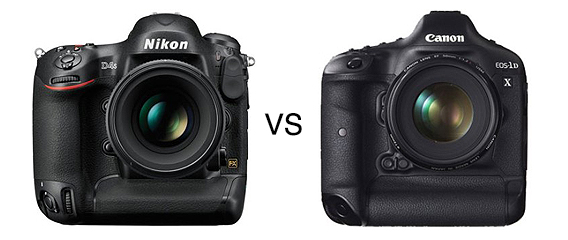The Nikon vs Canon Debate Heats up Again
Camera manufacturers Nikon and Canon both recently released new flagship models of their DSLR lines and, like anytime one of these giants puts out something new, their respective fans are fervently debating the pros and cons of the two with each side proclaiming a dominating victory over the other.
After reviewing all the specs, the two cameras, the Nikon D5 and the Canon EOS 1D X II, are pretty much neck-in-neck when comparing their features.
Did somebody say megapixels? Well, the fans of monster megapixel cameras will be disappointed. Especially since Canon’s release of the EOS 5DS R that offers a 50 megapixel image and their test cameras boasting an incredible 250 megapixels.
Nikon has remained silent during the enormous megapixel announcements and some were disappointed to hear their new flagship D5 offering “only” 20.8 MP images especially when one of their older models, the D800, provided 36 megapixel images. Even with the technology available to offer up to 250 megapixel images, Canon’s new 1D X II is pretty much in line with Nikon’s D5 with a megapixel count of 20.2.
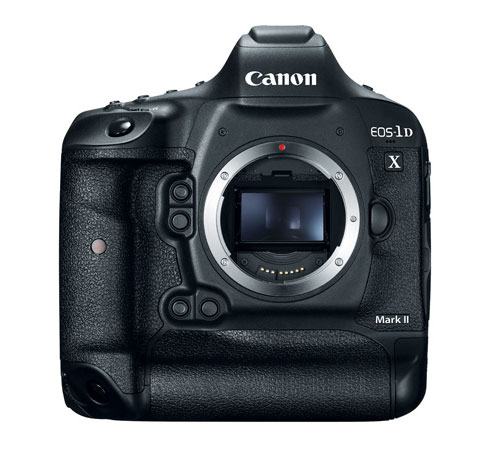
Why would Canon “settle” for such a small resolution? The answer is simple: a larger megapixel count doesn’t directly correlate to an increase in the quality of the final image as not all megapixels are equal. Factors such as noise, color accuracy, and light sensitivity all play a part in the quality of each of those megapixels, not to mention that extremely high resolution comes at a price. In order for both cameras to maintain the price structures to which their customers are accustomed for these flagships, concessions must be made.
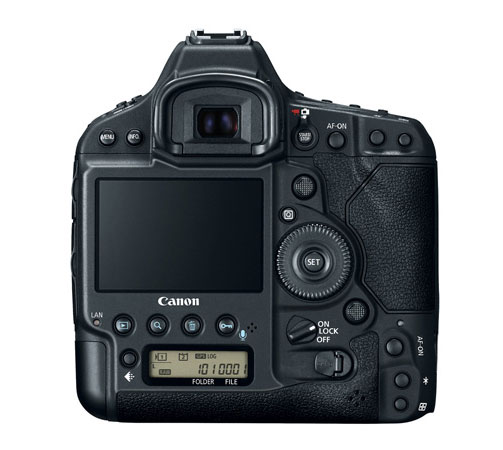
Other features that are fairly comparable are: sensor type (full frame), bit depth (14 bit), WiFi feature, the weight, and image resolution (1D X II: 5472 x 3648 vs. D5: 5568 x 3712). Both cameras offer the ability to use two memory cards. The Canon 1D X II has two slots: 1 CFast and 1 Compact Flash. The D5 is available in two different models, one model that houses two Compact Flash cards and the other that takes 2 XQD cards.
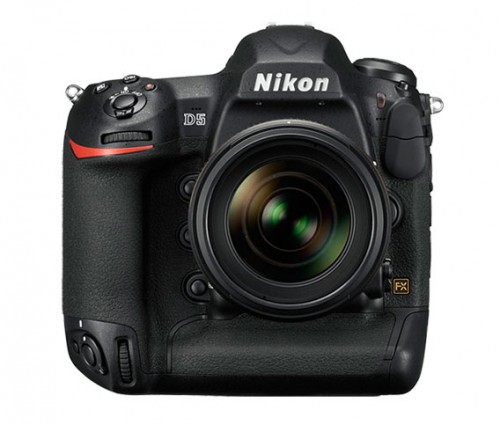
Where the Nikon D5 shines is in the ISO range, autofocus points, and the rear display. The D5 is the first DSLR to break the 1000000 mark of ISO with its normal range of 100 – 102400 and 50 – 3280000 when extended. The Canon 1D X II has a range of 100 – 51200 and 50 – 409600 when extended. The D5 offers more than double the autofocus points of the 1D X II. Nikon’s flagship provides 153 phase detection points, 99 cross type while Canon’s offers 61 and 41 respectively. While both rear displays are 3.2-inch touch screens, the D5’s has 2.359 million dots while the 1D X II has 1.62 million dots.
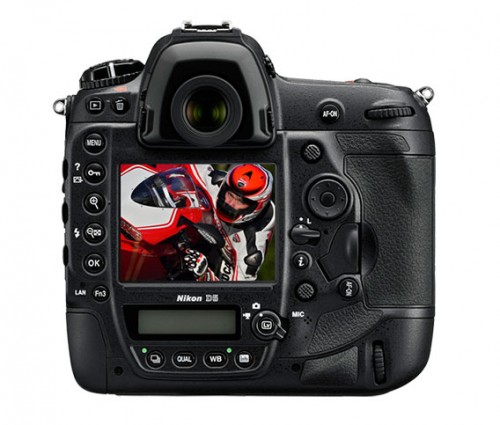
When it comes to continuous shooting Canon has the faster of the two cameras with 14 fps (16 fps in mirror lockup) as opposed to Nikon’s 12 fps (14 fps in mirror lockup). However, the buffer for the D5 is larger allowing for 200 continuous RAW images over 170 allowed by the 1D X II.
To those who use their DSLRs for video (and if you don’t, you should be giving it a shot), it is common knowledge that Canon is the real pioneer in this arena. Their release of the 5D MK II was a complete game changer in the world of photography and videography. Nikon is notorious for lagging behind Canon when it comes to video.
The D5 is the first Nikon DSLR to offer 4K but the video features are not as robust as the 1D X II’s. The D5 shoots 3840 x 2160p at 30 fps, 25 fps, 24 fps but with a maximum clip length of 3 minutes.
The 1D X II clearly dominates the video capability shooting clips up to 30 minutes at 4096 x 2160p at 59.94 fps, 50 fps, 29.97 fps, 25 fps, 24 fps, 23.98 fps. And for those who desire high fps, the 1D X II shoots full HD at 120 fps for smooth slow motion effects. Nikon is really missing the mark when it comes to video. As more and more photographers are venturing into this territory, it’s going to be imperative that Nikon step up their game if they wish to remain competitive in the camera market.
Side by side specs:
Sensor Format
Canon 1D X II: Full frame
Nikon D5: Full frame
Megapixels
Canon 1D X II: 21.5 megapixels (20.2MP effective)
Nikon D5: 21.33 megapixels (20.8MP effective)
Max Resolution
Canon 1D X II: 5472 x 3648
Nikon D5: 5568 x 3712
Aspect Ratios
Canon 1D X II: 3:2
Nikon D5: 3:2 and 4:5
File Formats
Canon 1D X II: JPEG, RAW for stills. MJPEG, MOV, MP4, MPEG-4 AVC/H.264 for video.
Nikon D5: JPEG, RAW, TIFF for stills. MOV, MPEG-4 AVC/H.264 for video.
Bit Depth
Canon 1D X II: 14-bit
Nikon D5: 14-bit
Memory Card
Canon 1D X II: 1 CFast and 1 CompactFlash
Nikon D5: 2 XQD or 2 CompactFlash
Autofocus Points
Canon 1D X II: 61 phase detection points, with 41 cross-type
Nikon D5: 153 phase detection points, with 99 cross-type
Viewfinder
Canon 1D X II: 100% coverage and ~0.76x magnification
Nikon D5: 100% coverage and ~0.72x magnification
Rear Display
Canon 1D X II: 3.2-inch touchscreen with 1.62 million dots
Nikon D5: 3.2-inch touchscreen with 2.359 million dots
ISO Range
Canon 1D X II: 100-51200 (50-409600 when extended)
Nikon D5: 100-102400 (50-3280000 when extended)
Metering Methods
Canon 1D X II: Evaluative metering, partial metering, spot metering
Nikon D5: 3D Color Matrix metering, center-weighted average metering, spot metering, highlight weighted
Continuous Shooting
Canon 1D X II: 14FPS at 20.2 MP for up to 170 RAW photos (16FPS with mirror lockup)
Nikon D5: 12FPS at 20.8 MP for up to 200 RAW photos (14FPS with mirror lockup)
4K Video Recording
Canon 1D X II: 4096 x 2160p at 59.94 fps, 50 fps, 29.97 fps, 25 fps, 24 fps, 23.98, 120 fps fps for smooth slow motion effects.
Nikon D5: 3840 x 2160p at 30 fps, 25 fps, 24 fps
4K Clip Length
Canon 1D X II: 30 minutes
Nikon D5: 3 minutes
Wi-Fi
Canon 1D X II: Yes
Nikon D5: Yes
Weight
Canon 1D X II: 3.37 lb (1530 g)
Nikon D5: 3.11 lb (1415 g)
The Nikon D5 retails for roughly $6500 and the Canon EOS-1D X II retails for right around $6000.
While we at STC are certainly obsessed with the latest releases with not only DSLRs but with medium format cameras such as Phase One and new lighting tools and modifiers, we do acknowledge that the gear does not make the photographer. If the price of these new flagships is out of your reach, don’t let that stop you and your pursuit of creating great images. To paraphrase the great Ansel Adams, great photography is really all about the 12 inches behind the viewfinder.
© 2016 Copyright ShootTheCenterfold.com. All rights reserved.





